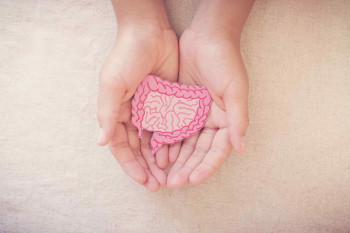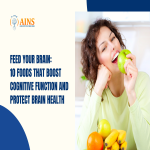Overview
The Brain Stroke Unit at ANS Super Speciality Hospital, part of our Centre of Neurosciences, is dedicated to providing a full spectrum of services for stroke patients, from prevention to treatment and rehabilitation. Our specialized team works collaboratively across departments to ensure each patient receives top-tier stroke management care.
Understanding Brain Stroke
A brain stroke, often called a "brain attack," occurs when the blood supply to the brain is interrupted or significantly reduced, either due to a blockage or a ruptured artery. This disruption prevents oxygen from reaching the brain tissue, leading to potential damage and death of brain cells.
Alternate Name: Brain attack
Associated Anatomy: Brain
Causes of Brain Stroke
The causes of brain strokes vary depending on the type:
- Ischemic Stroke: This type occurs when blood vessels supplying the brain are narrowed or blocked by blood clots, fatty deposits, or plaque that obstructs blood flow.
- Transient Ischemic Attack (TIA): Also known as a "mini-stroke," it is a temporary interruption of blood flow to the brain, often caused by blood clots or debris in the arteries.
- Hemorrhagic Stroke: This happens when a blood vessel in the brain leaks or ruptures due to high blood pressure, overuse of blood thinners, or conditions like aneurysms or arteriovenous malformations (AVMs).
Symptoms of Brain Stroke
Strokes impact different parts of the body depending on the brain area affected. Common symptoms include:
- Paralysis or numbness, particularly on one side of the body
- Difficulty speaking or understanding speech
- Confusion and lack of responsiveness
- Trouble walking, loss of balance, or dizziness
- Vision problems, such as blurriness, double vision, or complete loss of vision
- Severe headache with no known cause
- Behavioral changes, such as aggression
- Nausea
Risk Factors for Brain Stroke
Medical Risk Factors:
- High blood pressure (hypertension)
- Diabetes
- High cholesterol levels
- Obstructive sleep apnea
- Cardiovascular diseases
- Family history of stroke or heart disease
- COVID-19 infection
Lifestyle Risk Factors:
- Smoking
- Excessive alcohol consumption
- Use of illegal drugs
- Physical inactivity
- Obesity
Other Risk Factors:
- Age: Higher risk for individuals over 50
- Gender: Men are at higher risk than women
- Hormonal factors: Use of birth control pills or hormone therapy
Diagnosis of Brain Stroke
To diagnose a stroke, the following tests may be conducted:
- Blood Tests: To assess blood sugar levels, platelet count, cholesterol levels, and clotting speed.
- MRI: To detect any damage to brain tissues or cells.
- CT Scan: To identify bleeding or other brain conditions.
- EKG: To check for heart conditions that could cause a stroke.
- Cerebral Angiogram: To visualize blockages or clots in the arteries of the neck and brain.
- Carotid Ultrasound: To check for blockages or narrowing in the carotid arteries.
- Echocardiogram: To identify clots in the heart that could travel to the brain.
Differential Diagnosis: Conditions that might mimic stroke symptoms include brain tumors, complex migraines, seizures, hypoglycemia, meningitis, hypertensive encephalopathy, and drug toxicity.
Treatment of Brain Stroke
Treatment varies depending on the type of stroke:
1. Ischemic Stroke and TIA:
- IV Medications: Administered to dissolve clots.
- Endovascular Procedures: To deliver medication directly to the brain or remove clots via a stent retriever.
- Carotid Endarterectomy: To remove plaque from the carotid artery.
- Angioplasty and Stenting: To widen the narrowed artery and support it with a stent.
2. Hemorrhagic Stroke:
- Bleeding Control: Measures to reduce brain pressure.
- Surgical Interventions: To repair blood vessels or prevent aneurysm rupture.
- Coiling: To block blood flow to an aneurysm.
- Stereotactic Radiosurgery: For repairing vascular malformations.
- Prevention of Brain Stroke
Primary Prevention:
- Quitting smoking
- Managing diabetes, cholesterol, and blood pressure
- Engaging in regular physical activity
- Maintaining a healthy weight
Secondary Prevention:
- Reducing blood pressure
- Following a low-sodium diet
- Avoiding alcohol and tobacco
- Maintaining ideal body weight
- Managing cholesterol levels
- Undergoing anti-platelet or anticoagulation therapy
Possible Complications
A stroke can lead to various complications, ranging from temporary to permanent, including:
- Blood clots
- Muscle weakness and mobility issues
- Bowel and bladder problems
- Urinary tract infections
- Pneumonia
- Difficulty swallowing
- Vision and hearing problems
- Seizures
- Brain swelling
- Memory loss
- Depression and anxiety
Prognosis of Brain Stroke
The effects of a stroke can vary widely, from minor to severe disabilities. Some common outcomes include limb paralysis, loss of speech, facial muscle weakness, and emotional disturbances such as anxiety or depression.
Pathophysiology of Brain Stroke
The pathophysiology of a stroke involves a series of damaging processes in the brain, including loss of energy, acidosis, increased intracellular calcium, edema, free radical generation, and cell death. It also disrupts the blood-brain barrier and can lead to inflammation and excitotoxicity.
Natural Progression of Brain Stroke
Without treatment, a stroke can cause significant brain damage, leading to permanent disabilities such as paralysis, speech impairment, and cognitive changes. Early intervention is crucial to prevent these outcomes.
Frequently Asked Questions
What is a Brain Stroke?
A brain stroke, also known as a cerebrovascular accident (CVA), occurs when the blood supply to the brain is disrupted. This condition is a leading cause of death and disability, particularly in the Indian population.
What are the signs and symptoms of a Brain Stroke?
Symptoms include difficulty speaking, paralysis, vision problems, severe headache, and trouble walking. Additional issues may include depression, bladder or bowel control problems, and emotional instability.
How is a Brain Stroke diagnosed?
Diagnosis involves blood tests, imaging studies like MRI and CT scans, carotid ultrasound, cerebral angiogram, and echocardiogram.
What are the treatment options for Brain Stroke?
Treatment may include clot-dissolving medications, endovascular procedures, surgery, and lifestyle modifications. Specific interventions depend on the stroke type and severity.
What precautions should be taken after Brain Stroke treatment?
Patients should follow prescribed medications, maintain a healthy diet, avoid smoking and alcohol, manage blood pressure and diabetes, and engage in regular physical activity.
What are the risks involved in Brain Stroke treatment?
Risks may include nausea, dizziness, increased blood sugar, cognitive challenges, and physical issues such as weakness and numbness. These are generally manageable with medication adjustments.
Am I a candidate for the Brain Stroke Unit?
Patients with risk factors like obesity, inactivity, smoking, hypertension, or a history of stroke should consider evaluation at our Brain Stroke Unit for customized care plans.
























